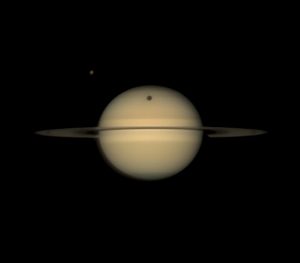Possible Telescope Targets
Key Points of Interest
The map below will provide locations for key points of interest in the observatory. If you have any questions, please don't hesitate to ask a staff member or volunteer.
- Garland Collection - Many of the original astronomy instruments obtained by Chancellor Landon Garland in the 1870s for use in the first physics and astronomy classes of Vanderbilt University.
- Star Model - An interactive model that displays information and positions of the 100 nearest and 100 brightest stars in the night sky as well as information about our own star, the Sun.
- Fused-Quartz Mirror Disk - One of two original, uncoated test mirrors for the 200" Mount Palomar Observatory that were given to Vanderbilt University. One was originally intended to be used in a new telescope of Vanderbilt University.
- Seyfert Telescope - On clear nights, the 24" Seyfert Telescope will be viewing a selected target. On cloudy nights, the doors will be open for visitors to see and learn about Dyer's largest telescope.
- Hallway Images - Large infographics about galaxies, the Milky Way, and the life cycles of stars. On the opposite wall is a high-resolution panorama of the Milky Way with constellations and deep-sky objects highlighted.
- HST Model & Planetarium Dome - Learn about the Hubble Space Telescope with the 1/5th scale model suspended in Dyer Observatory's original planetarium dome and experience the dome's acoustics.
- AstroCantus - A combination of art and science, AstroCantus is a series of chimes that sound as the stars pass overhead. NOTE: The chimes may be muted - ask a volunteer.
- ViewSpace Presentation - A presentation from the Space Telescope Science Institute. The program consists of continuous presentations ranging in length from five to 20 minutes and covering a variety of topics. Visitors may come and go as they please during the presentation.
- Meteorites & Tektites - A collection of various types of meteorites and tektites.
Sky Chart for December 12, 2025 @ 9pm

Deep Sky Objects
Stars and Constellations
General Information About the Sky
The ecliptic is the imaginary line that the Sun follows through our sky. In reality, this line is dictated by the orbit of the Earth. Since all of the planets of the solar system lie in nearly the same plane, one will observe the planets positioned very close to or on this line as well. Because the Moon’s orbit is tilted just a bit more than five degrees to this line, the Moon will not stray far from the ecliptic either. Some objects, such as comets, will not stay around the ecliptic. The constellations through which the ecliptic passes are the 12 famous zodiac constellations. There are, however, 13 constellations through which the Sun passes. For the first two weeks of December, the Sun is located in the constellation Ophiuchus, the serpent bearer.
There are 88 official constellations that cover the entire sky. Some are never visible from Tennessee as we are too far north; however, some, such as Ursa Minor and Camelopardalis, are circumpolar – they never get low enough in the sky to disappear below our horizon. The rest of the constellations are seasonal and visible in the evening sky for certain months of the year. Constellations are not just the stick figures we sometimes imagine connecting the brighter stars but are instead entire areas of the sky – everything is in a constellation. Objects outside of our solar system (stars, nebula, clusters, galaxies) remain in constellations, but the Moon, Sun, planets, comets, and asteroids all move through the constellations over time. Some famous star formations, such as the Big Dipper, Little Dipper, and Great Square of Pegasus, are not constellations – they are very recognizable parts of constellations known as asterisms. The Big Dipper, for example, is just a part of the constellation Ursa Major, the great bear.
Our Sun is just one of about 300 billion stars that make up our home galaxy, the Milky Way (shown in light grey in the sky map). In the late evenings of winter and summer, the Milky Way can be seen overhead. In the late summer, we are looking towards the center of the galaxy, which appears somewhat brighter. In the late winter, we are looking away from the center. Our solar system is situated on its side about halfway out from the center of this barred spiral galaxy.
When the Milky Way is easily visible, we have an opportunity to see many examples of the different types of objects found in the disk of a spiral galaxy. Spiral galaxies contain large amounts of dust and gas from which stars can form. As these clouds of material, known as nebulae, begin to collapse, denser pockets within the nebulae collapse faster to produce stars. When the stars begin to shine, they illuminate the clouds from which they formed. A prime example for late autumn to early spring is the Great Orion Nebula (M42), which forms the second “star” in the sword of Orion, the hunter. As time goes on and star formation uses up the remaining material of a nebula or disperses it, all that will eventually remain is a cluster of a few hundred to several thousand stars. These clusters, known as open clusters, are dominated by hot, blue-white stars and highlight the spiral arms of galaxies like our own. The Pleiades Cluster (M45), also known as “Subaru” or the “Seven Sisters,” is a beautiful example of such a cluster. The proximity of the cluster makes about six of its members easily visible to the unaided eye, but a low-power telescope will show dozens more.
The more massive a star is, the shorter its life will be. Massive stars therefore do not have enough time to venture far from the disk of the galaxy before ending their lives in spectacular supernovae. One such star, which was observed to explode in 1054 A.D., formed the Crab Nebula (M1). Most stars, however, are not massive enough to die explosively; instead, they puff up to become red giants and then gradually shed their outer layers over thousands of years. Once the core of the dying star is exposed, its ultraviolet light causes the shed layers to fluoresce, producing a beautiful planetary nebula. These nebulae have nothing to do with planets, rather their shape sometimes resembles the outer planets. Excellent examples of planetary nebulae are the Ring Nebula (M57), Clown Nebula (NGC 2392), and Cat’s Eye Nebula (NGC 6543).
During the late spring and autumn, the Milky Way appears closer to the horizon. Our galaxy, like all spiral galaxies, is shaped like a disk and is fairly thin compared to its width. As a result, when we see the Milky Way near the horizon, we are able to look up and out of our galaxy relatively easily to see objects outside of it. These include other spiral galaxies, like the Whirlpool (M51) and Andromeda (M31) galaxies, and spherical- to football-shaped galaxies known as elliptical galaxies, such as M87. Orbiting around these galaxies are globular clusters such as the Hercules Cluster (M13) and the Pegasus Cluster (M15). These clusters contain anywhere from a few hundred thousand to over a million stars in a small volume.




